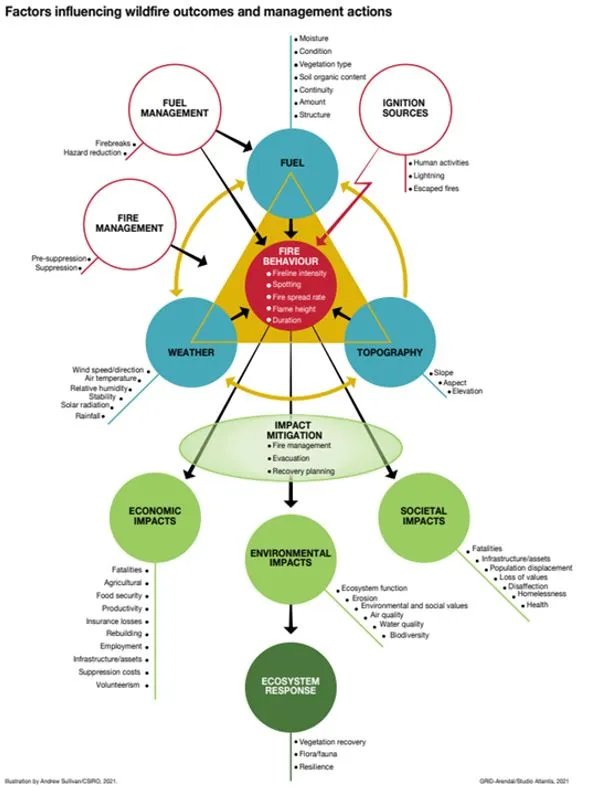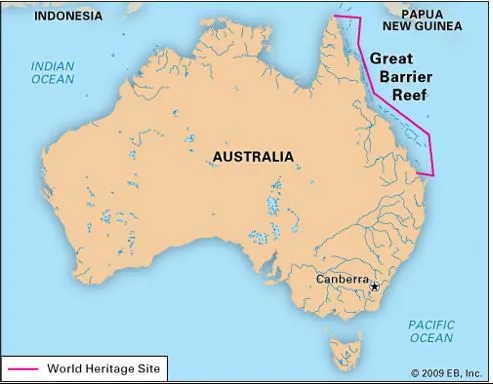

28th June 2024 (15 Topics)
Mains Issues
Context
The United Nations Office on Drugs and Crime (UNODC) has reported a significant increase in global drug use, highlighting the need for a comprehensive strategy to address the issue.
Increasing Trends in Global Drug Use
- Introduction to the Issue: The UNODC report, released on June 27, 2024, reveals that global drug users numbered 292 million in 2022, marking a 20% increase over the past decade.
- Cannabis as the Most Widely Used Drug: Cannabis remains the most commonly used drug with 228 million users, followed by opioids (60 million), amphetamines (30 million), cocaine (23 million), and ecstasy (20 million).
- Treatment Gap: Despite 64 million people suffering from drug use disorders, only one in 11 receives treatment, with women facing even greater barriers—only one in 18 women with drug use disorders receive treatment compared to one in seven men.
Implications for Gender Equality and Social Stability
- Gender Disparities in Treatment: The significant barriers faced by women in accessing treatment for drug use disorders underscore the need for gender-sensitive approaches in health care and rehabilitation.
- Impact on Young People: Evidence-based prevention programs are crucial, especially for young people, to equip them with the knowledge and skills to avoid drug use.
- Empowerment of Organized Crime: Drug trafficking fuels organized crime, which diversifies into other illegal economies, such as wildlife trafficking, financial fraud, and illegal resource extraction, exacerbating social instability.
Strategies for Addressing Drug Use and Its Consequences
- Comprehensive Strategy Needed: A multifaceted approach involving prevention, treatment, and law enforcement is essential to tackle the issue effectively.
- Law Enforcement and Health Rights: Strengthening law enforcement to disrupt criminal networks must be balanced with upholding human rights and providing health services to those struggling with addiction.
- Decline in Global Opium Production: A significant decline in opium production, particularly in Afghanistan (95% decrease in 2023) and Myanmar (36% increase), has long-term implications for global drug markets and treatment services.
UN Office on Drugs and Crime (UNODC):
|
Types of Drugs:In 2016, 6 drug types accounted for nearly all drug trafficking offenses:
|
Efforts to combat drug problem:
|
UPSC Mains Questions
Q. Examine the gender disparities in access to treatment for drug use disorders. What measures can be taken to address these inequalities?


Mains Issues
Context
The 2023 Statistical Review of World Energy (SRWE) reveals a record high in primary energy consumption, highlighting the persistent dominance of fossil fuels and the contrasting energy trends between the Global North and Global South.
Trends and Data on Energy Consumption:
- Record Primary Energy Consumption: The world saw a 2% increase in primary energy consumption in 2023 compared to 2022. Despite the growth in renewable energy, fossil fuels still constitute 81.5% of the global energy mix.
- Regional Disparities: The Global South, particularly the Asia-Pacific region, accounted for 56% of total energy consumption in 2023, with significant contributions from China, India, and Indonesia. In contrast, energy demand in Africa fell by 0.4%.
- Greenhouse Gas Emissions: Global emissions rose by 2.1%, crossing 40 billion tonnes of CO2 equivalents. The Global North continues to have higher per capita emissions, with North America averaging 11.5 tonnes of CO2 per person compared to 2 tonnes in the Global South.
Fossil Fuel Production and Consumption:
- Oil Production and Consumption: Oil consumption reached a record 100 million barrels per day, driven mainly by China. The United States remains the largest oil producer, with an 8.5% increase in production, while Russia's production fell by 1%.
- Natural Gas and Coal: The US set a new record in natural gas production, surpassing Qatar as the largest exporter of LNG. Coal production reached record levels, with 80% of output from the Asia-Pacific region, led by China and India.
- Impact of Sanctions: Russia’s oil production decline is attributed to international sanctions following the conflict with Ukraine.
Renewable Energy Trends:
- Growth in Renewables: Renewable energy accounted for 14.6% of total primary energy consumption in 2023. Renewables generated 30% of the world's power, with significant contributions from solar and wind.
- Regional Contributions: The Southern and Central American region had 72% of its power generation from renewables, despite significant growth in oil production.
- Record Installations: Record levels of renewable capacity installation, especially in China and Europe, reached 67%.
Challenges and Future Outlook:
- Energy Demand in Developing Regions: Despite low current energy demand, the population growth in Africa and South Asia positions these regions for increased future demand.
- Fossil Fuel Transition: The Global North, as historical polluters, must lead the transition away from fossil fuels. However, the transition remains slow in these regions.
- Policy Implications: The SRWE underscores the need for robust policies to balance economic growth with environmental sustainability, particularly in developing regions heavily reliant on fossil fuels.
Fact Box: India’s Energy Demand and Infrastructure:
|
Related PYQQ1: The question of India’s Energy Security constitutes the most important part of India’s economic progress. Analyze India’s energy policy cooperation with West Asian Countries. [2016] Q2: Give an account of the current status and the targets to be achieved pertaining to renewable energy sources in the country. Discuss in brief the importance of the National Programme on Light Emitting Diodes (LEDs). (2016) Q3: Clean energy is the order of the day.’ Describe briefly India’s changing policy towards climate change in various international for in the context of geopolitics. [2022] |
UPSC Mains Questions:
Q. Discuss the implications of the persistent dominance of fossil fuels in the global energy mix on efforts to combat climate change. Highlight the role of developed and developing countries in this context.


Mains Issues
Context
The inclusion of Indian Government Bonds (IGBS) in JP Morgan's emerging markets bond indices starting from June 28, 2024, marks a significant milestone for India's economic strategy and global financial integration. This move is expected to attract substantial foreign investment, impacting various economic facets such as external finances, foreign exchange reserves, and inflation management.
Inclusion Details and Eligibility Criteria:
- Index Inclusion Timeline: Inclusion in JP Morgan's GBI-EM Global index suite begins June 28, 2024. Phased inclusion over 10 months until March 31, 2025. India expected to reach maximum weight of 10% in GBI-EM Global Diversified Index
- Eligible Bonds and Criteria: 23 IGBs meet index eligibility criteria, with combined notional value of ~Rs 27 lakh crore ($330 billion). Only Fully Accessible Route (FAR) designated IGBs are eligible. Bonds must have notional outstanding above $1 billion and at least 2.5 years remaining maturity. Initially, only FAR-designated IGBs maturing after December 31, 2026, will be considered
- Additional Index Inclusion: Bloomberg announced inclusion of Indian government bonds in its Emerging Market Local Currency Government Index. Bloomberg inclusion set to begin from January 31, 2025, with initial weight of 10% of full market value
Expected Inflows and Economic Impact:
- Projected Capital Inflows: Estimated $20-25 billion inflows over the 10-month inclusion period. Monthly inflows expected to range between $2-3 billion. Since September 2023 announcement, IGBs have already seen inflows of $10.4 billion.
- Economic Benefits: Enhanced ability to finance fiscal and current account deficits. Potential lowering of risk premia and funding costs for government securities. Support for further development of domestic capital markets. Current account surplus of $5.7 billion (0.6% of GDP) in January-March 2024 quarter.
- Market Dynamics: Diversification of investor base for Indian government securities. Increased liquidity in government bond market. Potential for slight lowering of government borrowing costs
Challenges and Policy Implications:
- Inflation Management: Higher inflows likely to put pressure on inflation. RBI to release equivalent rupees when mopping up dollar inflows, potentially increasing money supply
- RBI's Response: Governor Shaktikanta Das affirms RBI's preparedness to manage inflow surges. Multiple instruments available to central bank for flow management. Past experience in handling similar situations cited as reassurance.
- External Sector Impacts: Boost to foreign exchange reserves expected. Potential strengthening of Indian rupee against major currencies. Need for careful balance between welcoming inflows and managing domestic monetary conditions.
GBI-EM Global index:
|
UPSC Mains Questions:
Q. Analyze the potential impacts of Indian Government Bonds' inclusion in global indices on India's external sector and domestic financial markets. How can policymakers balance the benefits and challenges arising from increased foreign inflows?


Mains Issues
The Pench Tiger Reserve in Maharashtra has launched an advanced Artificial Intelligence (AI) system for early detection of forest fires, marking a significant technological advancement in forest conservation efforts.
Technological Advancements in Forest Fire Detection
- Introduction to the System: The AI system, launched on June 26, 2024, features a high-resolution PTZ camera with a 15-kilometer visual range, covering over 350 sq km of the reserve. The camera is installed on a tower situated on one of the highest hills near Kirringisarra village.
- Satellite Integration: The system integrates alerts from fifteen commercial satellite services, providing a pioneering approach to forest fire management. The AI platform, Pantera, uses both camera feeds and satellite data to deliver real-time alerts within 3 minutes.
- Differentiation and Accuracy: The AI system can distinguish between smoke and clouds and features Infra-Red capabilities for 24×7 detection, minimizing false alarms and ensuring accurate and reliable alerts.
Benefits and Impact on Forest Fire Management
- Real-time Data Analysis: The system receives data on temperature, precipitation, and wind, allowing it to forecast probable fire incidences based on past data. This enables proactive fire control planning.
- Resource Integration: The system can be integrated with water tanks and forest vehicles equipped with GPS, allowing real-time tracking and management of resources during fire incidents.
- Improved Response Efforts: The swift detection and alert mechanism is expected to substantially improve forest fire management practices, enabling rapid response efforts to protect vast forest areas and the diverse wildlife within the reserve.
Collaborative Efforts and Implementation
- Collaborative Implementation: The project is a joint effort between Pench Tiger Reserve, Satpuda Foundation, Umgrameio (Brazil), and Forest Fire Tech (Scaale Inc, USA).
- Funding and Support: Funding for the project was provided by Solar Industries India Ltd, Nagpur, and the Maharashtra government.
- Anticipated Outcomes: The forest department anticipates significant improvements in fire management practices, with the potential to save vast forest areas and protect wildlife through swift and effective response measures.
Types of Forest Fire
|
Fact Box: India State of Forest Report (ISFR) 2021
|
UPSC Mains Questions
Q. Examine the importance of integrating satellite data and AI technology in environmental conservation efforts. How can these technologies be effectively utilized to address other environmental issues?


Mains Issues
Context
The worst mass coral bleaching event in the world's largest reef system has decimated at least 97% of the coral at Australia's Lizard Island within three months, as revealed by a recent drone analysis. This event highlights the severe impact of rising sea temperatures on coral reefs globally.
Impact of Rising Sea Temperatures on Coral Reefs
- Introduction to the Issue: Lizard Island, located in the north of the Great Barrier Reef, has experienced catastrophic coral bleaching, with high-resolution drone images showing a 97% decline in coral health between March and June 2024.
- Global Coral Bleaching Trends: According to the National Oceanic and Atmospheric Administration (NOAA), over 70.7% of coral reefs worldwide have been affected by bleaching-level heat stress since January 2023, surpassing all previous global mass bleaching events.
- Scientific Observations: Researchers from various institutions used drone imagery to quantitatively assess the extent of coral bleaching and death, with nearly all corals on Lizard Island succumbing to the event.
Consequences and Concerns for Coral Ecosystems
- Widespread Impact: Aerial surveys indicate that almost one-third of the Great Barrier Reef experienced 'very high' and 'extreme' levels of coral bleaching last summer, highlighting the widespread impact of rising sea temperatures.
- Mechanism of Bleaching: Coral bleaching occurs when corals expel algae from their tissues in response to extreme heat stress, causing them to appear white and become vulnerable to diseases. While some corals can recover when temperatures decrease, many die immediately or due to prolonged stress.
- Quantitative Assessment: The drone imagery provided the first quantitative assessment of coral deaths from the recent mass bleaching event, revealing a peak mortality rate of 97% in June.
Responses and Future Actions
- International Concerns: The United Nations Educational, Scientific and Cultural Organization (UNESCO) has expressed deep concern about the mass coral bleaching and has urged the Australian government to make the data on coral deaths public.
- Research and Monitoring: The Australian Institute of Marine Science is expected to release its annual report on coral reef conditions, which will provide further insights into the health of the Great Barrier Reef.
- Temperature Monitoring: Current sea surface temperatures across the Reef are slightly below the threshold that typically causes heat stress to corals, but they remain about 0.7°C above the June average, indicating ongoing environmental challenges.
Coral reefs
|
Great Barrier Reef:
|
UPSC Mains Questions
Q. Evaluate the global implications of mass coral bleaching events and the role of international organizations in addressing these environmental crises. What strategies should be adopted at the global level to protect coral reefs?


Mains Issues
Context
Researchers at the Indian Institute of Science Education and Research (IISER), Kolkata, have decoded the molecular mechanism of VEGFR1, a cell surface receptor, and its role in preventing cancers. This discovery offers potential medical solutions for colon and renal cancers by stabilizing the inactive state of VEGFR1.
VEGFR1 and its Mechanism:
- Introduction to the Enzyme: VEGFR1 is part of the family of enzymes known as Receptor Tyrosine Kinases (RTK), which are crucial for converting extracellular signals into cellular responses. VEGFR1 remains autoinhibited in the absence of a ligand.
- Role in Cellular Functions: RTKs, including VEGFR1, regulate cell differentiation, proliferation, survival, metabolism, and migration. Activation of these receptors leads to the formation of a signalling complex that controls diverse cellular functions.
- Autoinhibition and Pathology: Spontaneous activation of RTKs, in the absence of ligands, is associated with various human pathologies, including cancers. Researchers are exploring how cells maintain the autoinhibited state of these enzymes and why autoinhibition is breached in diseases.
VEGFR1’s Unique Behavior and Therapeutic Potential:
- Differential Activation: Among the VEGFR family, VEGFR1 cannot be spontaneously activated even when overexpressed, unlike VEGFR2, which can activate without its ligand. VEGFR1 binds with ten-fold higher affinity to its ligand VEGF-A, inducing transient kinase activation.
- Cancer Associations: Activation of VEGFR1 is linked to cancer-associated pain, tumor cell survival in breast cancer, and migration of colorectal cancer cells.
- Ionic Latch Mechanism: A unique ionic latch present only in VEGFR1 keeps the kinase autoinhibited. This latch hooks the juxtamembrane segment onto the kinase domain, stabilizing the autoinhibited state.
Implications for Cancer Treatment:
- Therapeutic Modulation: The research proposes the role of cellular tyrosine phosphatase in modulating VEGFR1 activity, highlighting the therapeutic potential of phosphatase modulators in regulating pathological angiogenesis.
- Research and Discoveries: The research, conducted using advanced facilities at IISER Kolkata and published in Nature Communications, underscores the potential of small molecules targeting the autoinhibited state of VEGFR1 for treating cancers such as colorectal carcinoma and renal cancer.
- Future Directions: This discovery opens avenues for developing therapeutic interventions against diseases caused by spontaneous VEGFR signalling activation, particularly in cancers where VEGFR1 is overexpressed.
UPSC Mains Questions:
Q. Explain the significance of cell surface receptors like VEGFR1 in the development of new medical treatments for cancer. How can understanding their mechanisms contribute to advancements in healthcare?


Mains Issues
Context
The Uttarakhand State Disaster Management Department (USDMA) is initiating a vulnerability study of 13 glacial lakes, including five in the "high-risk zone", to prevent potential calamities such as lake outbursts during the monsoon season.
Identifying High-Risk Glacial Lakes:
- Satellite-Based Risk Assessment: USDMA identified 13 new glacial lakes through satellite imaging in early 2023. Five lakes categorized as "high-risk" based on size, location, and potential impact. High-risk lakes located in Pithoragarh and Chamoli districts, known for their fragile ecological balance
- Geographical Characteristics of High-Risk Lakes: Located in Darma, Lasaryanghati, Kutiyangti Valley (Pithoragarh), and Dhauli Ganga basin (Chamoli). Lake sizes range from 0.02 sq. km to 0.5 sq. km, indicating significant water volume. Situated at elevations of 4,000 meters above sea level, making access and monitoring challenging
- Climate Change and Glacier Dynamics: Himalayan glaciers retreating at an average rate of 30-60 meters per decade. Rapid glacier melting leading to formation of new lakes and expansion of existing ones.
Comprehensive Study Approach:
- Advanced Bathymetry Study: Teams to employ state-of-the-art bathymetry techniques starting July 2023. Study aims to determine precise lake depths, volumes, and surrounding terrain characteristics. Data crucial for developing early warning systems and evacuation plans for downstream communities
- Multi-Agency Collaboration for Risk Assessment: USDMA collaborating with Indo-Tibetan Border Police for on-ground intelligence. Expert teams formed in March 2023 include specialists from five premier institutions:
- Indian Institute of Remote Sensing
- Geological Survey of India
- National Institute of Hydrology, Roorkee
- Centre for Development of Advanced Computing
- Wadia Institute of Himalayan Geology
- Innovative Risk Mitigation Strategies: Plans to implement controlled lake drainage by installing pipes in high-risk lakes. Technique aims to gradually reduce water pressure and minimize sudden outburst risks. Similar methods successfully employed in Nepal and Bhutan, reducing GLOF risks by up to 35%
Historical Context and Urgency:
- Devastating GLOF Events in Uttarakhand:
- Kedarnath valley GLOF in June 2013: Over 6,000 fatalities and economic losses exceeding $3.8 billion.
- Rishiganga Valley GLOF in Chamoli (February 2021): 72 lives lost and severe damage to infrastructure. These events highlight the catastrophic potential of GLOFs and the need for proactive management
- Global Climate Change Context: IPCC Sixth Assessment Report (2021) warns of increased GLOF risks in Hindu Kush Himalaya region. Projected temperature rise of 1.8-2.2°C in the region by 2050 could accelerate glacier retreat. Uttarakhand's initiative aligns with global efforts to adapt to and mitigate climate change impacts
- Monsoon Preparedness and Long-term Planning: Study timing coincides with monsoon onset, when GLOF risks typically peak. Part of Uttarakhand's broader climate adaptation strategy, including:
- Development of climate-resilient infrastructure
- Community-based early warning systems
- Integration of traditional knowledge in disaster preparedness
Fact Box:
|
UPSC Mains Questions:
Q. Discuss the challenges posed by glacial lakes in the Himalayan region and evaluate the effectiveness of current mitigation strategies. Suggest innovative approaches to enhance disaster preparedness in vulnerable areas.


Prelims Articles
Context
South India’s first and the country’s largest leopard safari was inaugurated at the Bannerghatta Biological Park (BBP).
About:
- It is a national park in India, located near Bangalore, Karnataka. It was founded in 1970 and declared as a national park in 1974.
- In 2002, a small portion of the park became a zoological garden, the Bannerghatta Biological Park.
- The park has a hilly terrain of granite sheets under moist deciduous forest valleys and scrubland on higher areas.
- Flora: Include Narcissus latifolia, Schleichera oleosa, Sandalwood, Neem, Tamarind, Bamboo, Eucalyptus etc.
- Fauna: Prime habitat for several species, including the endangered Asian Elephant, Indian gaur, Tiger, Sambar deer, Spotted deer, Leopard, Wild dog, Wild pig, Sloth bear, Common mongoose, Pangolin, Slender loris, Black-naped hare, etc.


Prelims Articles
Context
The elephants of Sabah in Malaysian Borneo and Kalimantan in the Indonesian part of the island, have been classified as ‘Endangered’ on the IUCN or International Union of Conservation of Nature’s Red List.
About:
- The smallest Asian elephant subspecies, Bornean elephants are distinctly smaller than their mainland cousins.
- They have long tails that sometimes touch the ground, relatively large ears, and straighter tusks.
- While Borneo elephants are smaller in size than their African counterparts, at 8.2-9.8 feet tall, the Bornean elephant is the largest mammal on the island.
- More than half of the animals’ forest habitat (60 per cent) has been lost in the last four decades, mainly due to logging and the widespread planting of commercial oil palm.
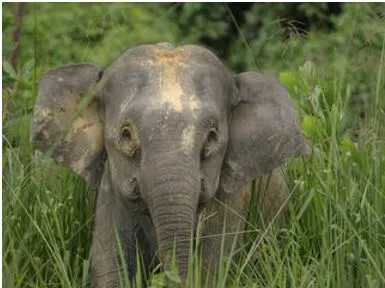


Prelims Articles
Context
The mainland serow, a mammal that looks like a cross between a goat and an antelope, has been recorded at the lowest elevation beyond Bhutan, its natural home, in Assam.
About:
- The mainland serow possesses guard hairs on its coat that are bristly or coarse and cover the layer of fur closest to its skin to varying degrees.
- The animal has a mane that runs from the horns to the middle of the dorsal aspect of the animal between the scapulae covering the skin.
- The mainland serow is found in central and southern China, Vietnam, Cambodia, Laos, Myanmar, Thailand, and in the Indonesian island of Sumatra. Its distribution follows forested mountain ranges.
- The mainland serow inhabits areas at altitudes of 200 metres to 3,000 metres. Its habitat is across the border in the Phibsoo Wildlife Sanctuary and the Royal Manas National Park in Bhutan.
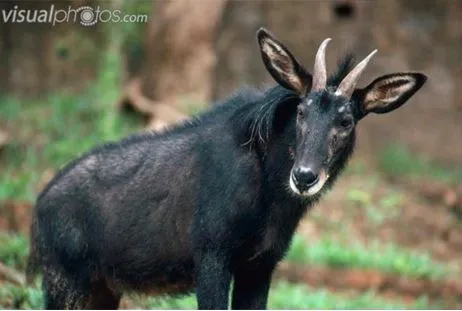


Prelims Articles
Context
Defence Research and Development Organisation (DRDO) has successfully completed six consecutive developmental trials of High Speed Expendable Aerial Target (HEAT) ‘ABHYAS’ with improved booster configuration from the Integrated Test Range (ITR), Chandipur, Odisha.
About:
- ABHYAS has been designed by DRDO’s Aeronautical Development Establishment, Bengaluru, and developed through Production Agencies - Hindustan Aeronautics Limited & Larsen & Toubro.
- It offers a realistic threat scenario for weapon systems practice.
- This indigenous system is designed for autonomous flying with the help of an auto pilot, a laptop-based Ground Control System for aircraft integration, pre-flight checks, and autonomous flight. It also has a feature to record data during flight for post-flight analysis.
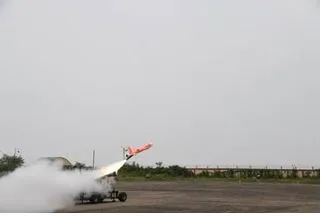


Prelims Articles
|
S.No. |
Term |
About |
|
1. |
Finfluencer |
Finfluencers are individuals who utilize social media platforms to disseminate financial advice, share personal financial experiences, and discuss investment strategies. They often have a large following and can significantly influence the financial decisions of their audience. |
|
2. |
Bathometry |
Bathymetry is the study and mapping of the underwater depths of oceans, lakes, or other bodies of water. It involves measuring the depths and creating topographic maps of the underwater terrain, similar to how topography maps depict land elevations. |
|
3. |
Q-Commerce |
Q-commerce, short for quick commerce, is a type of e-commerce focused on rapid delivery, often within an hour or less. It utilizes local warehouses or "dark stores" to fulfill orders quickly, primarily catering to grocery, food, and essential item deliveries. |
|
4. |
Autocracy |
Autocracy is a system of government where absolute power is held by a single individual, known as an autocrat. The autocrat has unrestricted authority, making decisions without the need for consent or input from others. |
|
5. |
Satire |
Satire is a literary or artistic form that uses humor, irony, exaggeration, or ridicule to expose and criticize human vices, follies, or social issues. It often aims to provoke thought and encourage change through laughter. |


Editorials
Context
The Reasi terrorist attack on June 9 highlights the persistent issue of cross-border terrorism affecting India, particularly from Pakistan. This event echoes similar historical attacks aimed at disrupting India's stability during significant political moments.
Continuing Challenge of Cross-Border Terrorism
- Historical Attacks and Persistence: The Reasi attack mirrors the 2014 attack on the Indian Consulate in Herat, Afghanistan, both intended to undermine Prime Minister Narendra Modi during pivotal moments.
- Role of Pakistan: Persistent links between terrorist groups in Pakistan and attacks in India, especially in Jammu and Kashmir (J&K), highlight ongoing challenges over the past 35 years.
- Evolution of Terror Tactics: Inspired by the Afghan Jihad, Pakistan utilized similar tactics to incite separatism in J&K, involving mass uprisings, violence against minorities, and terrorist activities.
Policy and Strategic Responses
- Initial Countermeasures: India developed counter-insurgency and counter-terrorism strategies in the 1990s, combining military force and political activity to restore normalcy in J&K.
- Diplomatic Engagements: From the 1990s, India pursued diplomacy, aiming for structured dialogue with Pakistan, though efforts were often stymied by Pakistan's reluctance to address terrorism.
- Pre-emption and Force: Post-2019 Pulwama attack, India adopted pre-emptive strikes and surgical operations against terrorist threats, marking a shift from pure diplomacy to a blend of kinetic action and strategic force.
Challenges and Future Directions
- Ambiguity in Military Doctrine: Defining what constitutes an "unacceptable" attack remains a challenge, complicating the consistent application of military responses.
- Global Diplomatic Efforts: Despite international recognition of Pakistan’s role in terrorism, India continues to emphasize the importance of sharing evidence and engaging the global community.
- Sustaining Pressure on Pakistan: External Affairs Minister S. Jaishankar's call for a solution to cross-border terrorism underscores the need for sustained international pressure on Pakistan to curb terrorist activities.
UPSC Mains Questions
Q. Examine the historical and strategic challenges that India faces in dealing with cross-border terrorism from Pakistan. How have these challenges shaped India's internal security policies?


Editorials
Context
The ongoing debate regarding a reduction in the repo rate highlights the complexities of monetary policy and its impact on economic growth, particularly in the context of India’s inflation and GDP growth targets.
Controversy Surrounding Repo Rate Reduction
- Introduction to the Issue: There are growing calls for a reduction in the repo rate to stimulate potential growth, despite the current inflation concerns and the RBI's growth projection of 7.2% for the year.
- Impact on Investment: High interest rates are expected to slow down investment as companies borrow less, yet business opportunities and capacity utilization rates often have a greater influence on investment decisions.
- Historical Context: Despite high interest rates in the past, robust bank credit growth was observed, indicating that factors other than the repo rate also significantly influence GDP growth.
Global Comparisons and Inflation Context
- Inflation Target Variations: India's central inflation target is 4%, higher than the 2% target in Western economies, due to factors like dependence on monsoon rains and government pricing policies affecting food prices.
- Repo Rate Historical Data: Historically, India’s repo rate has been high, averaging 6.28% for the 60 months preceding the pandemic, compared to 5.1% for the last 51 months when the rate was significantly lowered.
- Real Interest Rate Analysis: The real repo rate, calculated as the difference between the repo rate and CPI inflation, averaged -0.81% during the pandemic period, highlighting the nuanced understanding required in interpreting nominal vs. real interest rates.
Policy Implications and Future Directions
- Repo Rate Fairness: The current nominal repo rate of 6-6.5% is considered fair under normal conditions, with potential adjustments if inflation remains stable around 4%.
- Real Repo Rate Considerations: With the real repo rate currently around 1%, significant reductions in inflation would be necessary to justify a rate cut.
- Inflation Trajectory: The RBI’s primary mandate is inflation control within a 2% band around the 4% target, making sustained low inflation crucial for any future monetary policy decisions.
UPSC Mains Questions
Q. Discuss the role of the repo rate in influencing investment decisions and GDP growth in the Indian economy. How do other factors like business opportunities and capacity utilization interact with interest rates?


Editorials
Context
The discourse surrounding India's economic strategy emphasizes the need to focus on employment growth alongside GDP growth. The tourism sector emerges as a potential solution to address unemployment challenges while contributing significantly to economic development.
Significance of Tourism in Economic Growth:
- Employment Intensity: Tourism's share in employment (5.5%) is more than five times its share in GDP (0.9%), according to the 2022-23 Periodic Labour Force Survey.
- Economic Multiplier: The combined direct and indirect share of tourism in GDP is 1.8%, while its total employment share reaches 12.6% (76 million persons).
- Growth Potential: Restoring tourism's direct GDP share to pre-pandemic levels (2.7%) could increase total employment to 95 million, with further growth to 5.4% potentially creating 195 million jobs by the end of the decade.
Global Comparisons and India's Potential:
- Croatia Example: Despite its small size, tourism accounts for 20% of Croatia's GDP, highlighting the sector's potential.
- China's Tourism Sector: Tourism contributes 11% to China's GDP, demonstrating its significance even in large, manufacturing-focused economies.
- India's Underutilized Assets: India's vast coastline, mountains, cultural heritage, and religious sites offer immense untapped tourism potential compared to other countries.
Policy Recommendations and Challenges:
- Mindset Shift: Policymakers need to recognize tourism's potential in optimizing both GDP and employment growth.
- Resource Allocation: The upcoming budget should provide adequate resources and incentives to accelerate the sector's growth.
- Ecosystem Development: Investments in travel options, hotels, and high-quality services at tourism sites are necessary to boost the sector.
UPSC Mains Questions:
Q. Analyze the potential of the tourism sector in addressing India's employment challenges. How can policymakers leverage this sector to optimize both GDP and job growth?


